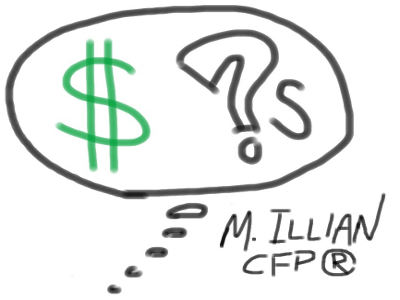I am worried about the current uncertainty in the markets. How should I go about picking conservative investments for my 401(k)?
Sincerely,
Conservative Investor
Dear Conservative Investor,
I have never seen a golfer choose to tee off a hole with their putter. And yet many young investors do start out with a putter by putting all of their retirement investments in a very conservative portfolio. You want to start out with some power and get to the fairway. As you get closer to the hole with each shot (this could be too much of an assumption for those hacks like me), you can focus on precision over power.
Imagine for a moment that you are being paid to move pottery from a warehouse to an adjacent showroom. Those who rush may end up breaking some items; those who move too slowly will risk not meeting their daily and annual quota. To the chagrin of a conservative investor, there is no getting around risks while pursuing financial freedom.
Annual returns will ultimately be determined by the type of portfolio risks you take. Portfolio construction begins with the most basic allocation between investments that offer a greater chance of appreciation (stocks) and those that provide portfolio stability (bonds). For example, younger investors have a longer time horizon to wait out market volatility, which is why professionals typically encourage a larger allocation to stocks. We estimate that an aggressive portfolio that is invested 90% in equities and 10% in bonds can expect a long term average return of 10.11% (5.61% real return and 4.5% average inflation) and a standard deviation of 15.61%.
It is likely that your 401(k) offers all-in-one asset allocation (often called “target-date”) investment options. These funds take the complexity out of selecting retirement investments by instantly diversifying your investments broadly. But before you settle on this simple solution, make sure you understand the fees involved. Some age-appropriate funds have fees that are significantly higher than all of their component parts, and if this is the case, you will likely be better off creating your own portfolio mix of low-cost funds. The bottom line for all investors is that fees matter, and you are more likely to achieve optimal returns in a low-cost portfolio.
As a benchmark for your 401(k) fees and performance, review the Vanguard Target Retirement Funds. These all-in-one funds have very low costs and well-researched diversification strategies. For example, the Vanguard Target Retirement 2035 Fund (VTTHX) has acquired fund fees and expenses of 0.19%. If your 401(k) plan does not offer a respectable asset allocation fund, start by using the allocation percentages to stocks and bonds from these all-in-one Vanguard funds to create your own.
If you have a money question that is nagging at you, please submit it using our contact page, http://www.marottaonmoney.com/contact. We try to respond to every question. If yours is chosen for MONEY QUESTIONS, we will give you a pseudonym and let you know the date the Q&A is published.

2 Responses
Frank Lehane
Question: how does an investor know what kind of investor they are i.e. conservative, aggressive, etc..?
Matthew Illian
Frank,
You ask a great question. You can fill out any number of risk tolerance questionnaires which attempt to answer this question. In reality, much of the answer depends on what the markets are doing at the time. Studies suggest that most investors are aggressive when the markets are surging and conservative when the markets are falling – a contrarian indicator. This is why so many find it so hard to follow the old “buy low and sell high” mantra which is the power behind regularly rebalancing a portfolio.
For a bit of fun, I created a “Test Before You Invest” which can be accessed here:
http://www.marottaonmoney.com/money-questions-test-before-you-invest/
The power of the equity markets to deliver returns through all sorts of conditions that could never had been imagined just one day prior is remarkable (ie. two world wars or the brink of a nuclear missile launch). “Aggressive investors” will believe that this economic development will persist in places that cultivate a fertile soil for entrepreneurs and those who are willing to put capital at risk. These investors need to be prepared for portfolio drops as much as 50% in really bad market drops and losses of confidence. “Conservative investors” will prefer a more stable ride that offers less growth.
When you review a portfolio, you should also be able to review it’s standard deviation. This is a measure for risk which looks at how much fluctuation you could expect in that portfolio based on historical experience. For a quick measure of your own pain tolerance, multiply the standard deviation by -3.5 which is about as bad a scenario as we might expect. This is a 3.5 sigma event. If the standard deviation is 16.3 and the average return is 7.5%, this suggests that you could see that portfolio drop by as much as 7.5% – 16.3% X 3.5 = 49.55%.
The market has always recovered from these crashes but the data suggests that during such a downturn many will pull out and lose hope in a recovery.